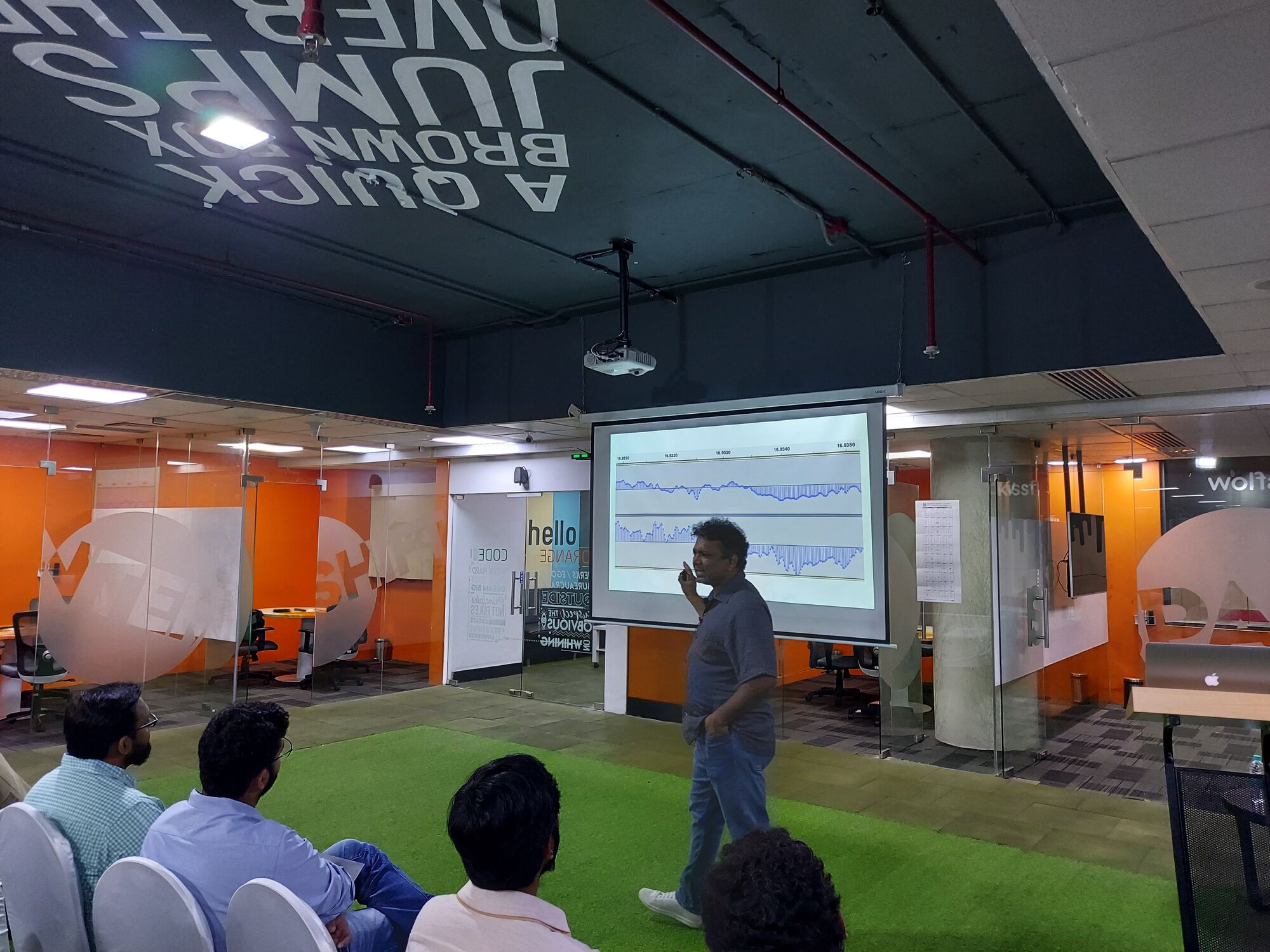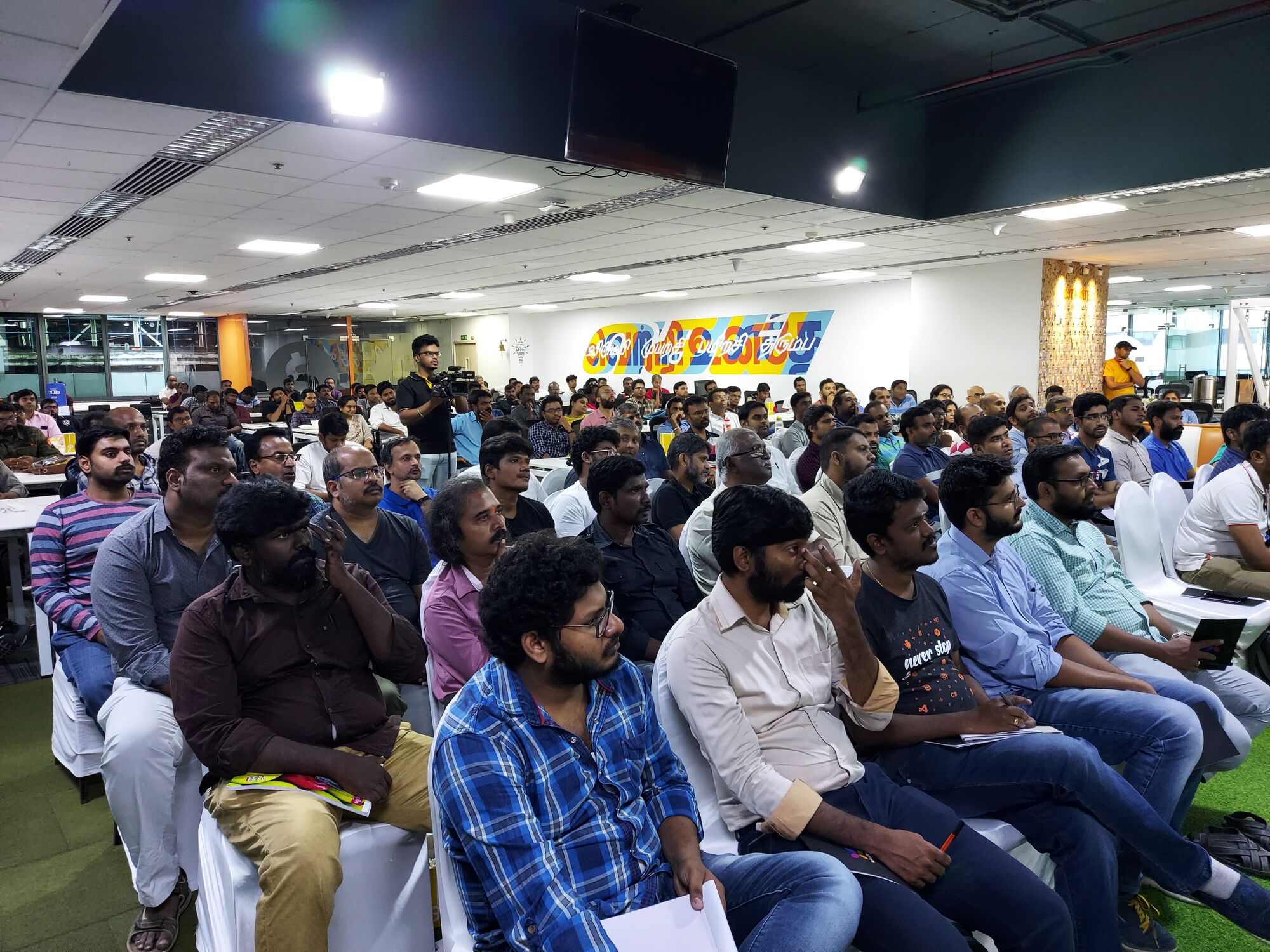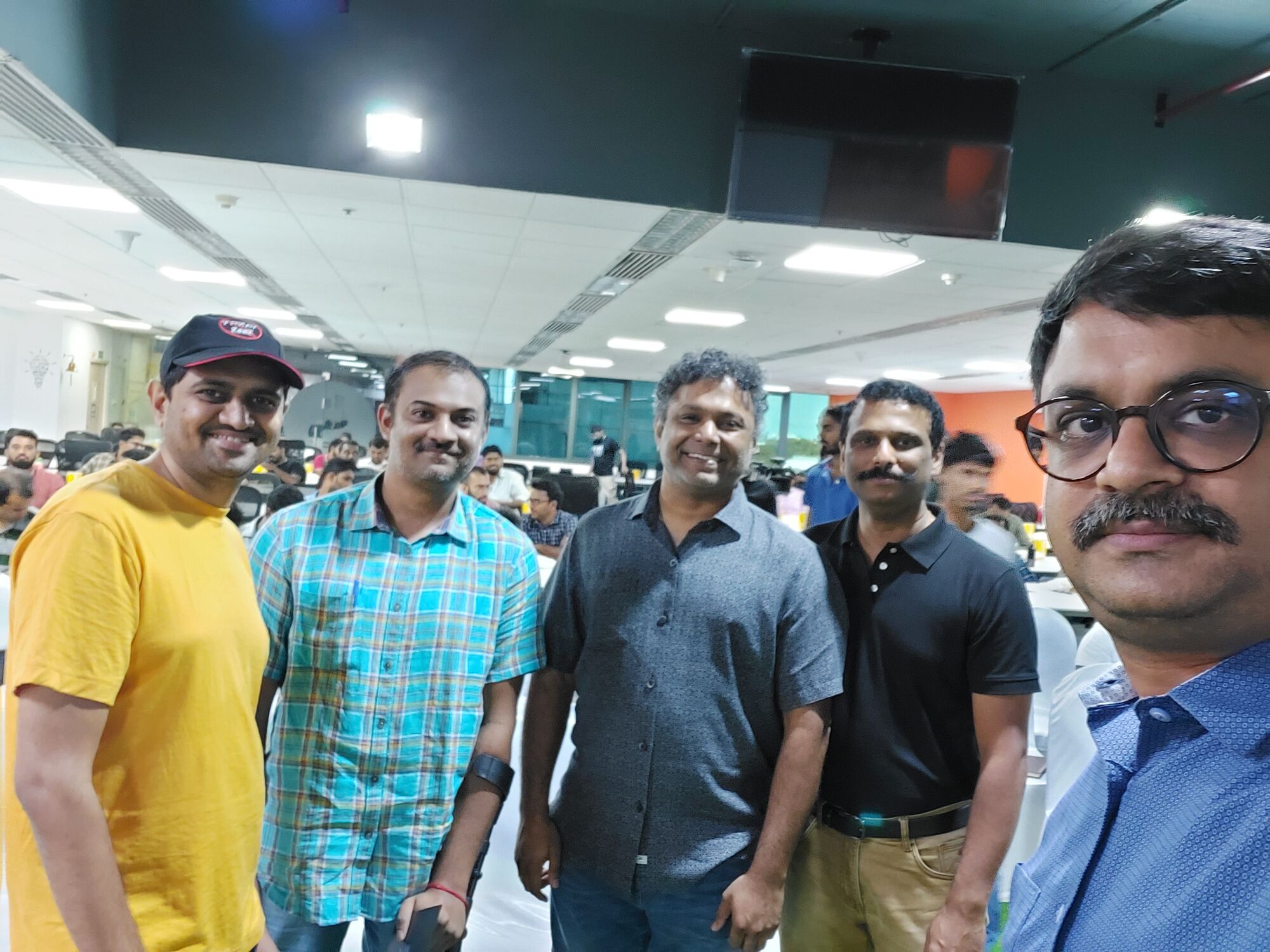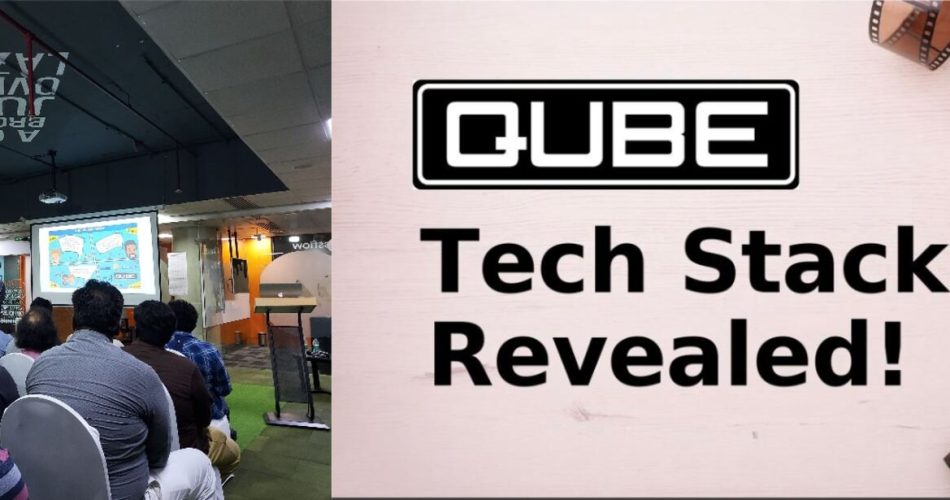The makers of Kissflow, OrangeScape, has been organizing a successful Technology series in their office at Tidel Park, Chennai. Titled aptly as the CTOTalk, the series offers an opportunity for software engineers & architects in Chennai to hear from the best of the best in the industry. So far the series has featured CTOs from Walmart, Flipkart, Bigbasket, Naukri, Swiggy, Chargebee, Snapdeal and many other big brands as Guest Speakers.
Today’s talk was by good friend Mr Rajesh Ramachandran, CTO of Qube Cinema on “Revolutionising Global Cinema with Digital Technology”. Qube Cinema (earlier called as Real Image) is from Chennai and is one of the leading providers of digital movie technology in India, Hollywood and across 48 countries – a big achievement for any Indian company in the heavily competitive cinema industry. The Qube product line has over 7,000 installations, is in 4,000 cinema screens across India, 42% of Indian screens.
Rajesh is a tech wizard who I know for nearly three decades now. In his twenty years in Qube, he has built an amazing technology team that spans across three continents: India, USA & Europe. Now, they make their own hardware complete with custom FPGA, their own Real-Time Linux distribution and high-performance workflow with GoLang & C++ for offsite and onsite for theatrical distribution.
He covered in his talk the basics of technology involved in cinema distribution:
- Image Digitization (1-bit Monochrome, 8-bit Grayscale, 24-bit 16 Million Color palette),
- Audio signal sampling (capturing the entire human hearing spectrum of 20-20,000 Hz through 48 kHz sampling),
- JPEG 2000 compression (which has little to do with the JPEG image standard we use every day) they use to handle the nearly 2 TB of data that comes from the mastering process, and,
- Color triangle, the arrangement of colours within a triangle & the importance of DCI-P3 colour standard followed by Digital Movie Projection from the film industry.
DCI objectives were to establish and document specifications for an open architecture for digital cinema that ensures a uniform and high level of technical performance, reliability and quality.
Rajesh then moved to cover the business-specific topics:
- How the movie industry with his 100 years of heritage has managed to maintain compatibility across the globe through standards – you could take a (chemical) film roll and have it work in a projector in Timbuktu, which itself maybe 50 years+ old. So, when the industry started the journey to Digital, the pioneers had a huge responsibility to the same principles of compatibility. This was achieved through the formation of a body called DCI (Digital Cinema Initiatives) in 2002 by the leading motion picture studios.
- Apart from DCI, there is the Society of Motion Pictures and Television Engineers body (SMPTE) which has developed more than 800 standards focused on film and digital cinema, television, and internet video.
- How even the digital products and services for the movie industry interoperates with offerings from various manufacturers from around the world.
- The regulatory and compliance auditing that their devices and software have to get certified before being released. The engineering work involved for the compliance and certifications (not the actual audit/certification) cost over $500,000 for each device, a princely sum. Then there is a confidence test which cost about 10% of the half-a-million dollars, this has to be repeated for every three updates of the underlying software/hardware.
- Explained the advantages of DTS Audio, Dolby Atmos and Audio objects which provide immersive sound experiences over vanilla sound systems.
- Inclusion of technology for the accessibility – HI (Hearing Impaired Audio), VI-N (“Visually Impaired Narrative” audio), Closed Captions, and, more.
He then moved on to talk about their products-Qube Master, Qube Wire and others. Explained how their hardware that sits inside the digital projects in the theatre has a secure enclave like setup housing their FPGA and tamper-detect/tamper-evident hardware that disables itself on tampering. Their inclusion of invisible & inaudible digital fingerprinting that records in every frame the location of the screen and the timestamp to deduct the source of any piracy.
Rajesh ended the talk outlining a future where just the script with meta-data getting shipped to the theatres, all the visual rendering and composing happening there in real-time, taking into account localization needs including of featuring regional actors, locations and language.
Overall, a very informative morning session to learn how digital cinema works.

Rajesh Ramachandran explaining Audio Signal Sampling

Rajesh of Qube explaining the Color triangle

CTOTalk at Orangescape had a packed hall of over 200 participants today

ChargeBee Mr Krish Subramanian, Qube Cinema Mr Siva, Qube Mr Rajesh Ramachandran, OrangeScape Mr Suresh Sambandam & Venkatarangan
P.S.: Rajesh also showed the cost breakdown for making a film in a chart called Sankey diagram.



Comments